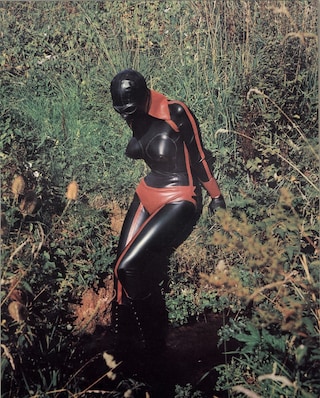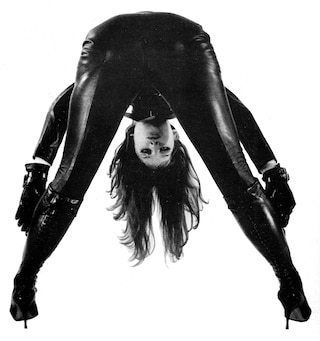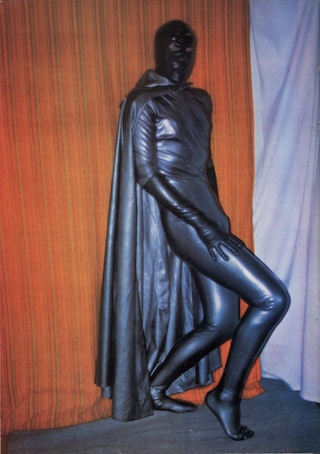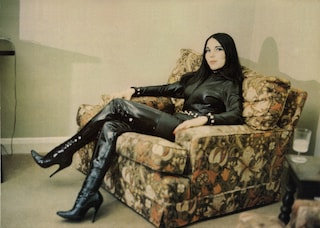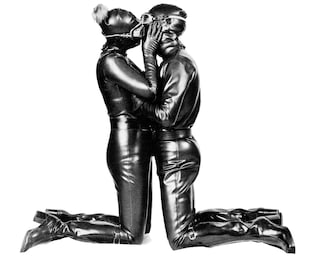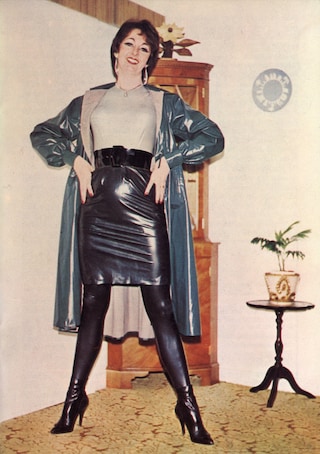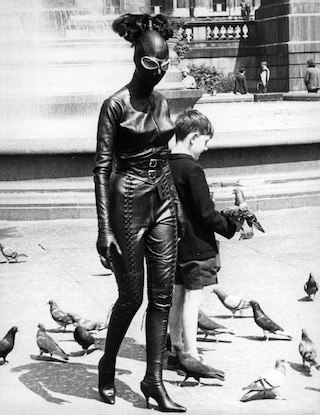From Kubrick’s Korova Milkbar to Westwood and McLaren’s SEX shop, fetish designer John Sutcliffe pushed fashion to the vinyl frontier
Taken from the October 2010 issue of Dazed:
John Sutcliffe was a talented, naturally creative man with an unusual love of leather and ladies on motorbikes, and it was precisely this love affair that led him to start a company called AtomAge from a small room in Hampstead in 1957. He had been divorced a year or so earlier: his problematic passions had been diagnosed as mental illness, treatment had failed and marital breakdown followed. He left home with little more than a camera and the clothes on his back. He started up as a wedding photographer, it went well, and Sutcliffe eventually made enough to buy himself a motorbike. Legend has it that one evening he went out with a young lady on the pillion: the weather was inclement, and the ride ended with the passenger soaked through. It was decided that before the next ride, a leather weatherproof suit should be bought for the young lady. But this was the 1950s and such things for the female form did not exist. So, the fanatically inventive Sutcliffe took it upon himself to make one. He bought the leather skins, borrowed his landlady’s sewing machine and set to work. The suit he created involved large press studs, wide belts and had a sexy, chivalrous look that his passenger found irresistible. Her female friends found it impressive too, and soon orders were coming in thick and fast for more of the same.
This was the start of AtomAge, a business originally described as “a manufacturer of weatherproofs for lady pillion riders”. Sutcliffe had nothing more than good ideas, a knack with leather, a new space-age fabric called vinyl and a sewing machine he had modified. But his work and reputation spread, and over the next few years clients came from all walks of life to have bespoke leather garments made. In the early 1960s Sutcliffe moved to larger premises in Covent Garden (at the request of world-famous theatrical bootmakers Anello and Davide). This larger workshop in Drury Lane brought all sorts of new work his way; if you were looking for dramatic operatic costumes, startling leathers for TV and film or erotic wear for Revue bar girls, AtomAge was the only place you could turn. This should have really set Sutcliffe on the road to fashion superstardom but sadly it wasn’t a path paved with gold. “He wasn’t really a businessman, he had no business acumen at all,” says Robert Henley, who met Sutcliffe in Covent Garden in the mid-1960s. “He just about managed to make ends meet.” It seems that Sutcliffe was unable to capitalise fully on the opportunities that obviously came his way. “He was driven by his psychological influences,” continues Henley. “He was very interested in women on motorcycles. I remember he’d seen a woman on a motorbike and she was wearing a man’s leather jacket and men’s biker boots. John thought this was all wrong, and asked if he could make a more suitable outfit for her. It turned out that the woman he had been talking to was Marianne Faithfull.”
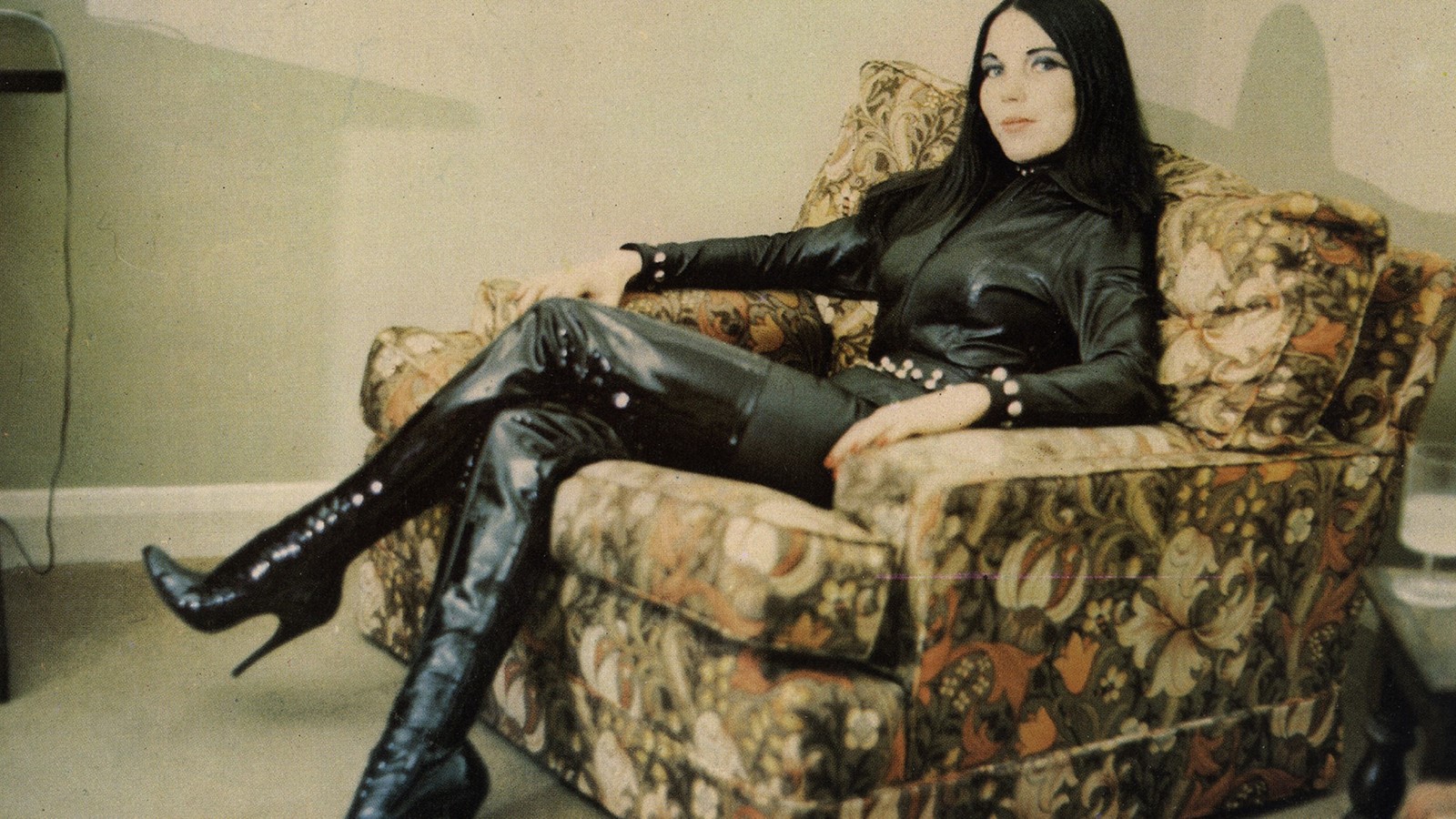
In hindsight, the now iconic Girl on a Motorcycle suit – that most notorious cinematic leather moment of the swinging 60s – should have Sutcliffe’s name all over it, or beside it or something, a bit like the way every time the mini-skirt is mentioned so is Mary Quant. The fact he is not remembered can only make you wonder what went wrong. According to Robert Henley, Sutcliffe really should be more recognised: “He was one of the apostles of fashion. I mean, he was one of the important designers of the 1960s that revolutionised everything – he freed fashion from its applied traditional constraints. Before John came along the idea of a woman wearing leather was a shocking one. John was one of the movers of the Carnaby Street scene, and fashion never really looked back after this magical period.”
Luckily, Henley struck up a long and fruitful friendship with Sutcliffe, and by 1972, he had convinced him to try and expand his business by starting a catalogue or magazine. The result was the A5 publication simply called AtomAge, and issue one was printed in 1972. It was a wild mixture of colour and black-and-white photography, featuring shots of John’s latest suits, an order form, and some writing on the subject of leather by Robert Henley, his wife Helen Henley and various other contributors. It was only available via mail order from the company, so circulation was limited, and printing of future issues was difficult, sporadic and unpredictable.
“He was one of the important designers of the 1960s that revolutionised everything – he freed fashion from its applied traditional constraints.” –Robert Henley on John Sutcliffe
As well as new publishing, Sutcliffe had also managed to develop some key new methods when working with more modern fabrics. For vinyl he developed a sewing needle that allowed you to stitch and work it like never before. He also cleverly developed a way of bonding latex. Most other latex workers of the period had simply tried to heat bond or glue latex together. Sutcliffe was far more cunning, and developed a way of attaching a muslin type fabric to latex, which could then be firmly and securely sewn. These breakthroughs in simple designs and technology allowed the AtomAge business to “expand” further into vinyl and rubber wear too.
Pretty soon the little A5 magazine was covering all kinds of burgeoning scenes: the simple love of leather, mackintosh fetishism, complex rubber desires, mask wearing, wading and mudlarking. Photos from fans, followers, readers and customers were sent in, and the magazine developed the ACS or AtomAge Correspondence System, which allowed subscribers to contact each other easily. And by issue 13 (published in 1976) a new supplement had been developed, which was to concentrate on the emerging bondage scene.
At around the same time a young documentary maker called John Samson and his producer Mike Wallington were on the hunt for a new subject to film. They’d already made a fine documentary about tattoos (Tattoo), and were specifically looking for underground scenes and cultures to explore. Mike Walllington had spotted some AtomAge leather-work in an Allen Jones art book. It was a genuinely startling, leather backless Korova Milkbar costume that Allen Jones had designed for pre-production of Kubrick’s A Clockwork Orange.
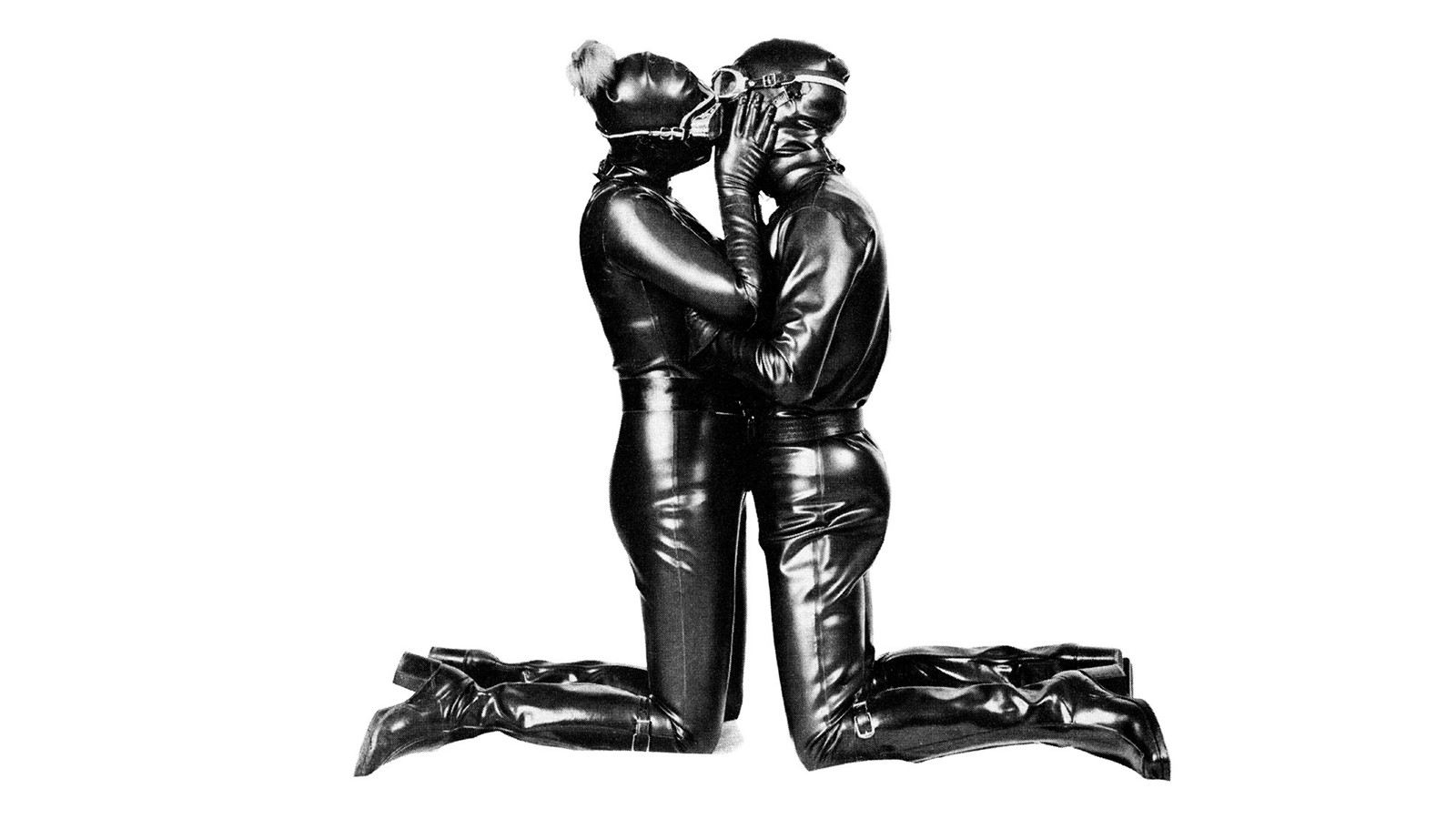
The costume, which left the Milkbar hostess with exposed buttocks, had been credited to AtomAge and so Wallington decided to look up the company. He recalls the experience with extraordinary, almost fetishistic, clarity: “We phoned and made an appointment, like a doctor’s appointment, for the next day. It was formal, professional even. We climbed six flights of a concrete staircase to the top-floor studio at the intersection of Drury Lane and Long Acre. There was no one to greet us: just an open door leading to an inner sanctum: floor-to-ceiling bright red velour wall covering, a 50s style kidney-shaped low table, a couple of matching chairs. Hanging from the wall, on a peg, was the flayed skin of Saint Bartholomew – a suit from head-to-fucking-toe of the most exquisite soft leather. There was also a strappy thing that looked like a contraption a vet might use to help in the birthing of a calf. It turned out to be a little something for the weekend, a lace-up mermaid harness, custom made for a Masters & Mistresses Association get-together. On the table were stacks of this impossibly weird magazine, AtomAge. The guy not only made fetish clothes, he was a photographer and published a gorgeous magazine.
We were left alone, now in the knowledge it was intentional, to breathe in the atmosphere. I also knew that suspense is part of the fetish game. Waiting to meet John Sutcliffe was maybe going to be a really refined experience. He eventually appeared grinning, full of gentlemanly, almost courtly bonhomie, like a conjurer performing at the Magic Circle, Sutcliffe was truly the best in the world at what he did: a shaman who conjured up worlds of sexual possibilities with relish and wit.”
The pair learned much from Sutcliffe in a very short period of time. They gained his trust and with his help and connections made the film Dressing For Pleasure. “Without John Sutcliffe, of course our film could never have been made. In the fetish world in 1975 he had the respect of everyone on the scene and he had the facility to upset nobody. He was the source of the river.” The Samson/Wallington film is an extraordinary documentary about Sutcliffe, his magazine and the scenes that surround it. It features Malcolm McClaren and Jordan talking rubber in the SEX boutique in Kings Road. It looks at the more serious side of underground clothing scenes and exposes fetishes that had never really been revealed before. With candid interviews, extraordinary set-ups and some quite stunning items of clothing, it’s a remarkable, groundbreaking film. And it contains a very rare interview with Sutcliffe himself, at the time sipping whisky, smoking a cigarette and dressed in one of his distinctive, restrictive black vinyl creations. The documentary was banned immediately by London Weekend TV and has rarely been publicly screened since.
Sutcliffe continued publishing, and a total of 32 original AtomAge magazines were produced between 1972 and 1980, the last 20 issues all with supplements. The market was getting bigger and more exciting, the different scenes were developing quickly and competition was now starting to grow. Sutcliffe decided to redesign everything and relaunch AtomAge as several new publications. AtomAgeInternational was the all new A4 result, quickly followed by the standalone A4 AtomAge Bondage and AtomAge Rubberist. He worked on better distribution and hoped this new publishing venture would reap rewards.
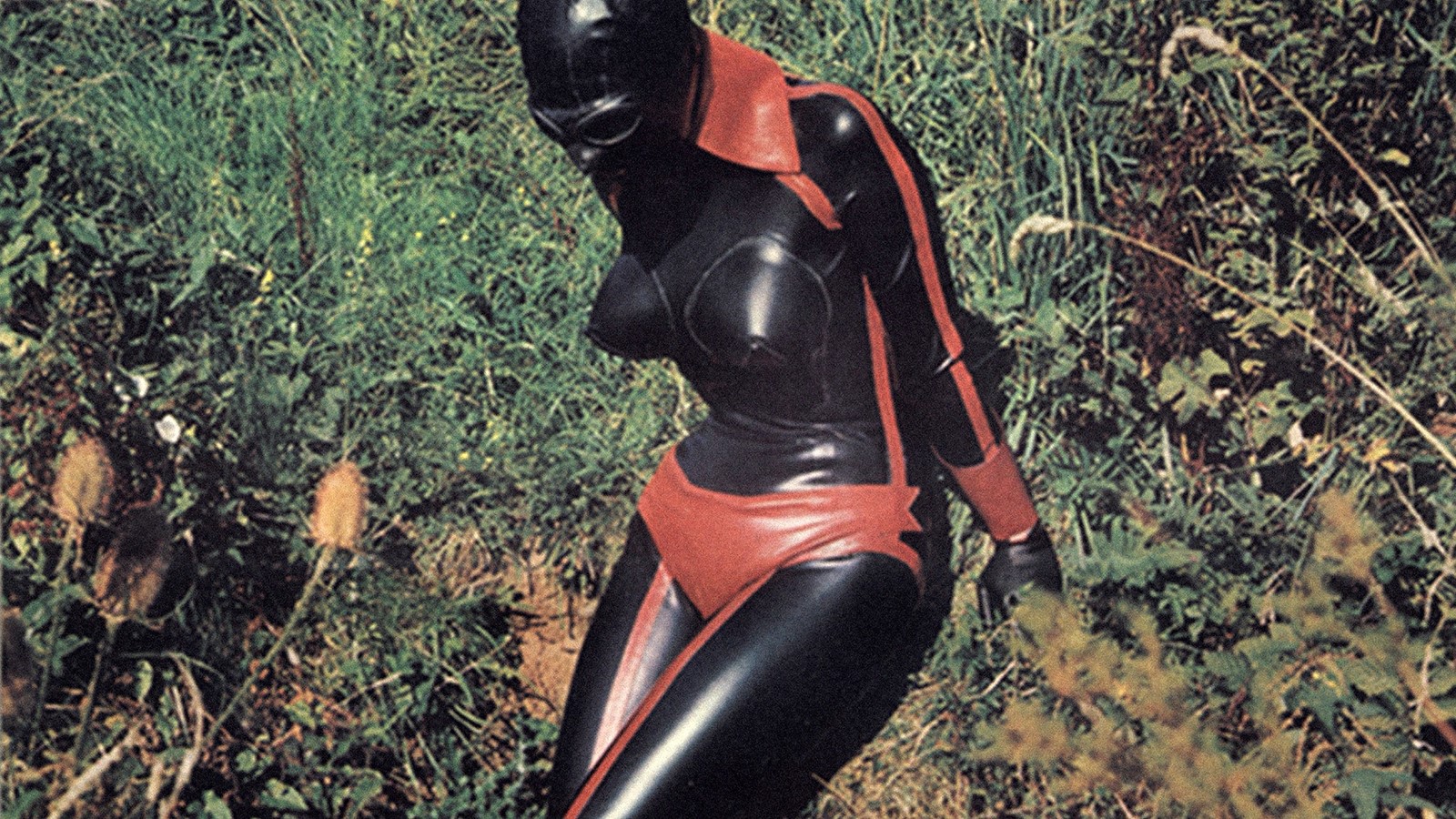
Then in 1982 he published The Story Of Gerda, a fictional but controversial tale of fetishism and bondage. An offended member of the public sent a copy to the police, who subsequently raided the AtomAge premises and confiscated all stock, and possibly anything else they could lay their hands on. To avoid prosecution, Sutcliffe agreed to have all AtomAge magazine plates destroyed, all stock destroyed. His business was left in tatters. Friends and followers rallied to his aid and over the next few years, the business was slowly helped back on its feet. He moved to new premises in Park Royal, north London, and although a few new publications were pressed, the business, and John, never really recovered. He died working at his desk in 1987.
The AtomAge business was sold on to another company and remained a shadow of its former self. In fact Sutcliffe’s whole life, work and influence has remained very much in the shadows. Luckily the AtomAge imagery has been licensed and will appear in the new book Dressing For Pleasure this year. And as a result of the book and this article, more people will get to know about this most unusual of characters. He deserves to be a hero, a fashion and design star of some importance. Mike Wallington who has contributed to the book states that Sutcliffe was “a dreamer for whom nothing was inconceivable”. It’s certainly true that exposure to his images and designs make you aware of his importance or impact. But it’s not just his designs and clothing that are of influence here. By following his desires and showcasing them to an unsuspecting public, Sutcliffe inadvertently became a beacon to which many clothing kinks were drawn, and in turn he seems to have been a major catalyst in exposing what has now become a huge, diverse and very commercial fetish industry.
All images taken from Dressing for Pleasure, The Best of AtomAge available from FUEL publishing.




